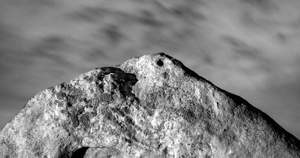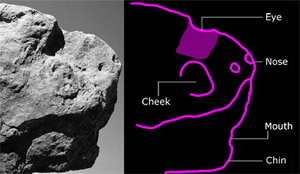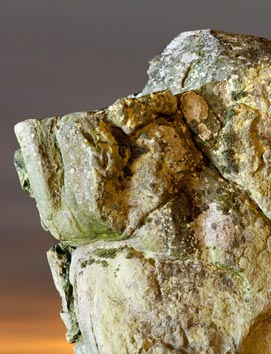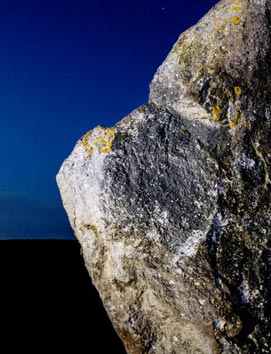|
Simplified Forms Of The Cove Stone I Face
After some reflection it struck me that portraits of the Cove Stone I character were in fact reproduced at varying scales all over Avebury, created in a simplified style retaining the angular face but omitting the horns. Perhaps this omission was intended to reduce the amount of carving required, or to allow the use of less broad sarsens, or to show that these subsidiary carvings were not intended to compete with the most sacred Cove iteration. Perhaps the missing horns on these subsidiary works were "understood" to be part of the depicted god's nature, missing or aerial body parts implied by the worshipper's knowledge of neolithic tradition/folklore.
A good example of this simplied depiction of the Cove Stone I face would be that carved on top of the Avenue's Stone 25b (see figure 3 below, click on the thumbnail to see a larger version).

figure 3 (above)
Another example is atop Stone 13b of the West Kennet Avenue, shown in figure 4 below, click on the thumbnail to see larger:

figure 4 (above)
Yet another example, this time from the corner of the famous Swindon Diamond Stone, again click the thumbnail so see a larger version. Notice the simply carved slot eye:

figure 5 (above)
Stone 13a of the West Kennet Avenue offers a particularly haunting beaked profile:

figure 6 (above)
Stone 13b of the West Kennet Avenue offers another great example:

figure 7 (above)
|